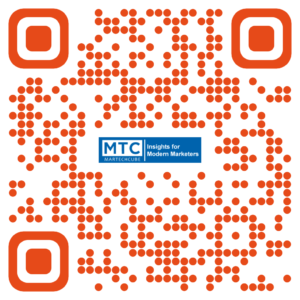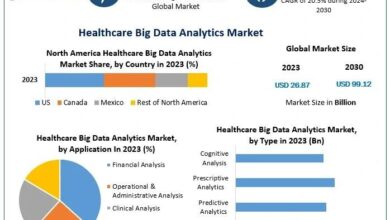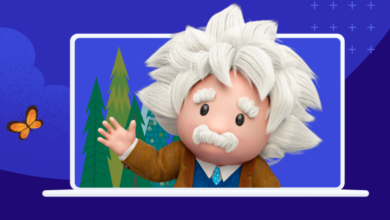MarTech Interview with Georgios Grigoriadis, CEO of Baresquare

Georgios, Can you please share a brief overview of your professional journey in the marketing and technology industry, leading up to your current role as the CEO of Baresquare?
I started as a developer but quickly realized I was more interested in making products commercially viable than writing code. An MBA brought me to Sony Europe, where I loved helping managers make data-driven decisions but disliked how difficult and time-consuming data analysis was.
That pain point drove me to start Baresquare. We set out to automate repetitive analytics tasks so people could get actionable insights without wasting hours staring at dashboards.
Empowering people drives me – tearing down walls, so everyone, not just data scientists, can harness the power of data to make better decisions. I want to make work and life easier with AI that turns data into accurate, meaningful, real-time insights. That still drives me today as Baresquare’s CEO, to revolutionize marketing, shatter barriers, and unlock data’s full potential.
What, in your opinion, happens to marketing when analytics meets ChatGPT? How has this fusion influenced the industry landscape?
The fusion of analytics and ChatGPT is a game-changer for marketing. It’s like handing marketers a crystal ball that not only shows them the future but also tells them how to get there.
With ChatGPT’s ability to understand and generate human-like language, marketers can now have a conversation with their data. Today’s LLM technology can’t give precise answers when processing mass amounts of marketing analytics, but once marketers get to the answer, LLMs can explain it in plain English without drowning in jargon or complexity.
But it’s not just about making data more accessible. ChatGPT is also transforming the way marketers create content, engage with customers, and personalize experiences. It’s like having a tireless, infinitely knowledgeable copywriter, customer service rep, and strategist all rolled into one.
The impact on the industry is profound, leveling the playing field and giving small businesses access to the same insights and capabilities that were once the exclusive domain of big corporations.
Marketers must rethink their roles, being both creative and analytical now. It changes the very definition of marketing. It enables deeper understanding of customers, anticipating their needs, and creating value in every interaction.
Using data and AI not just to sell more, but to genuinely improve people’s lives.
How do you believe GenAI can effectively boost sales for marketers in a crowded market, and what potential downsides should marketers be aware of when integrating this technology?
GenAI is a double-edged sword. On one hand, it’s a powerful tool for cutting through the noise and reaching customers with laser-targeted precision.
But there’s a catch. As GenAI becomes more widespread, customers can spot generic, algorithm-generated content from a mile away, and they’re quick to tune out anything that feels inauthentic.
There’s also the danger of over-automation leading to tone-deaf or insensitive messaging. A GenAI system might optimize for short-term sales without considering the long-term impact on brand reputation or customer loyalty. It might prioritize efficiency over empathy, missing crucial nuances in customer sentiment or context.
When done right, GenAI can increase sales like nothing else. But marketers must use it wisely, always keeping sight of the real goal – not just making a quick sale, but building lasting relationships with customers based on genuine value and trust.
Considering the customer journey, which specific stages do you believe are particularly ripe for leveraging AI and data analytics to enhance the overall marketing strategy?
Every stage of the customer journey presents opportunities for AI and analytics, but focus on the pivotal make-or-break moments.
● Awareness stage: Sentiment analysis and social listening to identify pain points, desires, and trends.
● Consideration and decision stages: Hyper-relevant content and experiences at scale. Think personalized recommendations, tailored offers, and social proof from similar customers.
● Post-purchase stage: Identify churn risks and trigger proactive outreach. AI chatbots for instant, human-like support whenever needed.
The key is to be guided by clear human strategy, with transparency and customer control baked in from the start.
Expanding on the previous question, could you elaborate on how generative AI specifically can be a game-changer in boosting sales for marketers navigating a crowded market? And, conversely, are there any drawbacks that should be carefully considered?
Imagine a world where every product description, every email, every ad feels custom-crafted by a master salesperson who intimately knows your desires. That’s the promise of GenAI.
The good: It unlocks personalization at immense scale and speed. Marketers can curate and test myriad content variations in the time it once took to finalize a single generic message.
The bad: Lean too heavily on GenAI without careful human oversight, and you risk unleashing generic, tone-deaf, or even offensive content. Over-automation can quickly go into uncanny valley territory, breaking brand trust.
The key is thinking of GenAI as a scalpel, not a bludgeon. Set clear guardrails, keep a human firmly in the loop, and always focus on adding genuine value and connection for the customer.
In your view, why is AI-powered personalisation crucial to boosting awareness and staying competitive in today’s dynamic market? Can you provide examples of successful implementations?
Consumers are bombarded with more choices, messages, and noise than ever before. The only way to cut through the cacophony is by making them feel truly seen, heard, and catered to on an individual level.
That’s where AI-powered personalization shines. We’ve all experienced the delight of a Netflix or Spotify recommendation that feels astonishingly “right.” AI personalization aims to replicate that in every consumer interaction – not just with entertainment, but in every product, service, and brand experience.
Of course, implementing it at scale is no small feat. It demands a robust data infrastructure, continuous experimentation, and a fundamental realignment around customer-centricity. Think Netflix and Spotify again. But for brands that get it right, the competitive advantage is immense.
How would you define AI data analytics, and in what ways do you believe marketers can strategically utilise it to their advantage in today’s rapidly evolving landscape?
It allows marketers to turn the raw information into crystal-clear, actionable insights at a speed and scale that would be unthinkable through human analysis alone.
At its core, AI data analytics is the fusion of artificial intelligence and data science. Advanced machine learning algorithms comb through vast troves of structured and unstructured data, uncovering hidden patterns, predicting future trends, and prescribing the next best actions.
For marketers, it’s a quantum leap from backwards-looking, aggregate dashboards to forward-looking, granular recommendations.
● Predictive modeling can identify at-risk segments early and recommend the best retention strategies for each individual.
● Automated alerts can surface optimization opportunities and suggest tweaks on the fly.
● AI can crunch historical patterns and market signals to illuminate the optimal media mix.
And that’s just scratching the surface.
However, it’s not easy to reach at that point. It’s hard and no one already knows how to do it. But this vein of gold goes deep.
Considering the data deluge that many marketers face, how can they effectively navigate and leverage this information overload to drive more informed decisions and successful campaigns?
Data overload is the Achilles’ heel of the modern marketer.
We have access to more information than ever before, but too many teams are drowning in dashboards but thirsting for real insights.
The real magic, though, is in closing the gap between insight and action. The most successful data-driven marketers build insight activation right into their campaigns and workflows. Automated alerts and recommendations become the drumbeat that keeps everyone marching in sync and on course, even as market conditions shift.
On a more personal note, could you share a strategy or approach that has been particularly instrumental in your leadership journey at Baresquare?
My philosophy at Baresquare can be summed up in one word: curiosity. In a world that’s changing faster than ever, I believe the only sustainable competitive advantage is a genuine zest for continuous learning – at every level, in every role.
But curiosity alone isn’t enough. It needs to be combined with focus and discipline.
One way I do that is through what I call “curiosity conversations” – regular one-on-one dialogues with team members, customers, and industry thought leaders. The sole agenda: to ask questions, explore ideas, and uncover fresh insights. Not to drive decisions, but to expand our collective understanding.
Then, I also push my team (and myself) out of comfort zones with “curiosity challenges.” These are short-term stretch projects or experiments designed to spark growth.
The metric for leadership success isn’t revenue or efficiency – it’s learning velocity.
As a successful leader in the marketing and technology space, what piece of advice would you give to aspiring professionals and our readers who are looking to make a mark in the industry?
Obsess over solving real problems for real people. This sounds obvious, but in practice, it’s all too rare. Our industry is awash in shiny new technologies and buzzworthy trends. It’s easy to get swept up in the hype cycle, chasing the next big thing without ever stopping to ask: “What real-world value does this add? Whose life does this make meaningfully better?”
Don’t get me wrong – I’m a passionate believer in the power of marketing technology. But that power is only realized when it’s harnessed in service of tangible human needs.
The most successful innovations – the ones that don’t just grab headlines, but actually move the needle – always start with deep customer empathy.
For more such updates, follow us on Google News Martech News





